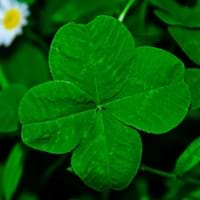Life Span
Annual and Perennial
Perennial
Type
Bulb or Corm or Tuber
Bulb or Corm or Tuber
Origin
Central America, South America
Mexico
Types
Vine, Flowering plant
lucky clover is a type of clover
Habitat
All sorts of environments, Along Railroads, Banks, Moist Ditches, Roadsides, rocky banks of streams
Along Railroads, River side, Roadsides
USDA Hardiness Zone
10-13
8-10
Habit
Vining/Climbing
Clump-Forming
Minimum Width
Not Available
Flower Color
Purple, Rose
Yellow green, Magenta, Fuchsia
Flower Color Modifier
Bicolor
Bicolor
Fruit Color
Not Available
Not Available
Leaf Color in Spring
Purple, Dark Green, Black
Green, Light Green, Chocolate
Leaf Color in Summer
Light Green
Light Green
Leaf Color in Fall
Several shades of Green
Several shades of Green
Leaf Color in Winter
Light Green
Light Green
Leaf Shape
Acicular
Heart-shaped
Plant Season
Spring, Summer, Fall, Winter
Spring, Summer, Fall
Sunlight
Full Sun, Partial Sun
Full Sun, Partial Sun, Partial shade
Growth Rate
Very Fast
Medium
Type of Soil
Clay, Loam, Sand
Loam, Sand
The pH of Soil
Acidic, Neutral, Alkaline
Acidic, Neutral
Soil Drainage
Well drained
Well drained
Bloom Time
Late Spring, Early Summer, Summer, Late Summer, Early Fall, Fall, Late Fall
Late Spring, Early Summer, Summer
Tolerances
Drought
Drought
Where to Plant?
Container, Ground
Ground
How to Plant?
Cuttings, Leaf Cutting, Tuber propagation
Seedlings
Plant Maintenance
Medium
Medium
Watering Requirements
Keep the Soil well drained, Needs very little water
Water every two or three days during warmer months
In Summer
Lots of watering
Ample Water
In Spring
Moderate
Adequately
In Winter
Average Water
Less Watering
Soil pH
Acidic, Neutral, Alkaline
Acidic, Neutral
Soil Type
Clay, Loam, Sand
Loam, Sand
Soil Drainage Capacity
Well drained
Well drained
Sun Exposure
Full Sun, Partial Sun
Full Sun, Partial Sun, Partial shade
Pruning
Remove damaged leaves, Remove dead branches, Remove dead leaves
Remove damaged leaves, Remove dead branches, Remove dead leaves
Fertilizers
All-Purpose Liquid Fertilizer
All-Purpose Liquid Fertilizer
Pests and Diseases
Red blotch
Red blotch
Plant Tolerance
Drought
Drought
Flower Petal Number
Single
Single
Foliage Texture
Coarse
Medium
Foliage Sheen
Matte
Matte
Attracts
Aphids, Beetles, Cutworms, Insects, Mites, Whiteflies
Bees
Allergy
Abdominal pain, allergic reaction, Nausea, Skin rash, Twitching of face
Not Available
Aesthetic Uses
Not Used For Aesthetic Purpose
Not Available
Beauty Benefits
Not Available
Not Available
Environmental Uses
Air purification
Prevent weeds
Medicinal Uses
Cures constipation, Fiber, Low calories, lowering blood pressure, Potassium, ß-carotene, Vitamin A, Vitamin C
Not Available
Part of Plant Used
Leaves, Root, Shoots, Stem, Tuber
Leaves
Other Uses
Starch, Used As Food, Used as Ornamental plant
Traditionally considered as lucky plant
Used As Indoor Plant
Sometimes
No
Used As Outdoor Plant
Yes
Yes
Garden Design
Container, Edible, Groundcover, Hanging Basket, Herb / Vegetable, Mixed Border, Rock Garden / Wall, Vine
Bedding Plant, Container, Groundcover, Houseplant, Mixed Border, Rock Garden / Wall
Botanical Name
IPOMOEA batatas 'Blackie'
OXALIS tetraphylla
Common Name
Blackie Sweet Potato Vine, Sweet Potato Vine
Four-leaved Pink Sorrel, Goodluck Plant, Lucky Clover, Mexican Wood Sorrel
In Hindi
शकरकन्द
Lucky Clover
In German
Süßkartoffel
Glücksklee
In French
Patate douce
trèfle porte-bonheur
In Spanish
Ipomoea batatas
trébol de la suerte
In Greek
Sweet potato
τυχερό τριφύλλι
In Portuguese
Batata-doce
trevo da sorte
In Polish
Wilec ziemniaczany
lucky koniczyny
In Latin
Ipomoea batatas
felix Trifolium
Phylum
Tracheophyta
Magnoliophyta
Class
Magnoliopsida
Magnoliopsida
Family
Convolvulaceae
Oxalidaceae
Clade
Angiosperms, Asterids, Eudicots
Not Available
Tribe
Not Available
Trifolieae
Subfamily
Not Available
Faboideae
Number of Species
Not Available
Importance of Sweet Potato Vine and Lucky Clover
Want to have the most appropriate plant for your garden? You might want to know the importance of Sweet Potato Vine and Lucky Clover. Basically, these two plants vary in many aspects. Compare Sweet Potato Vine and Lucky Clover as they differ in many characteristics such as their life, care, benefits, facts, etc. Every gardener must at least have the slightest clue about the plants he wants to plant in his garden. Compare their benefits, which differ in many ways like facts and uses. The medicinal use of Sweet Potato Vine is Cures constipation, Fiber, Low calories, lowering blood pressure, Potassium, ß-carotene, Vitamin A and Vitamin C whereas of Lucky Clover is Not Available. Sweet Potato Vine has beauty benefits as follows: Not Available while Lucky Clover has beauty benefits as follows: Not Available.
Compare Facts of Sweet Potato Vine vs Lucky Clover
How to choose the best garden plant for your garden depending upon its facts? Here garden plant comparison will help you to solve this query. Compare the facts of Sweet Potato Vine vs Lucky Clover and know which one to choose. As garden plants have benefits and other uses, allergy is also a major drawback of plants for some people. Allergic reactions of Sweet Potato Vine are Abdominal pain, allergic reaction, Nausea, Skin rash and Twitching of face whereas of Lucky Clover have Not Available respectively. Having a fruit bearing plant in your garden can be a plus point of your garden. Sweet Potato Vine has no showy fruits and Lucky Clover has no showy fruits. Also Sweet Potato Vine is not flowering and Lucky Clover is not flowering . You can compare Sweet Potato Vine and Lucky Clover facts and facts of other plants too.





